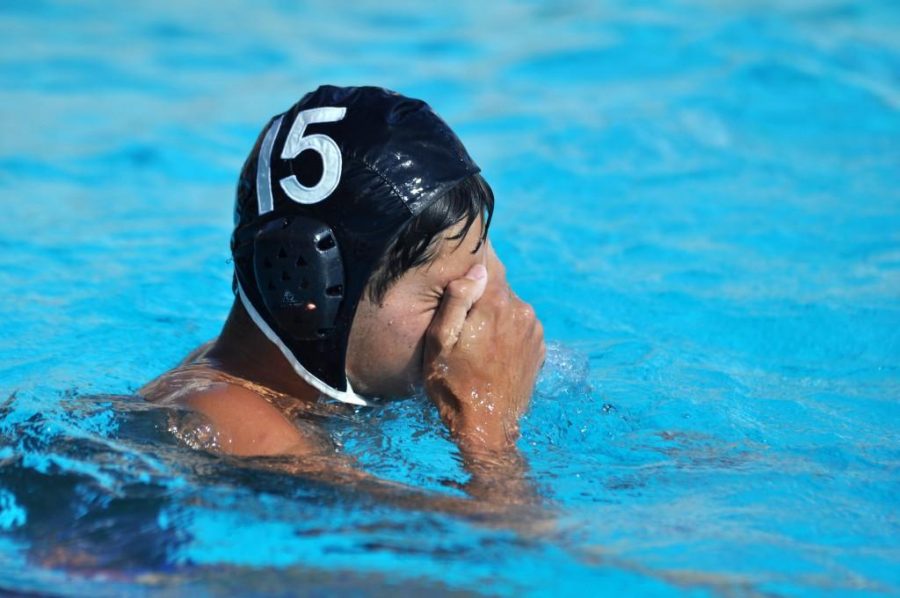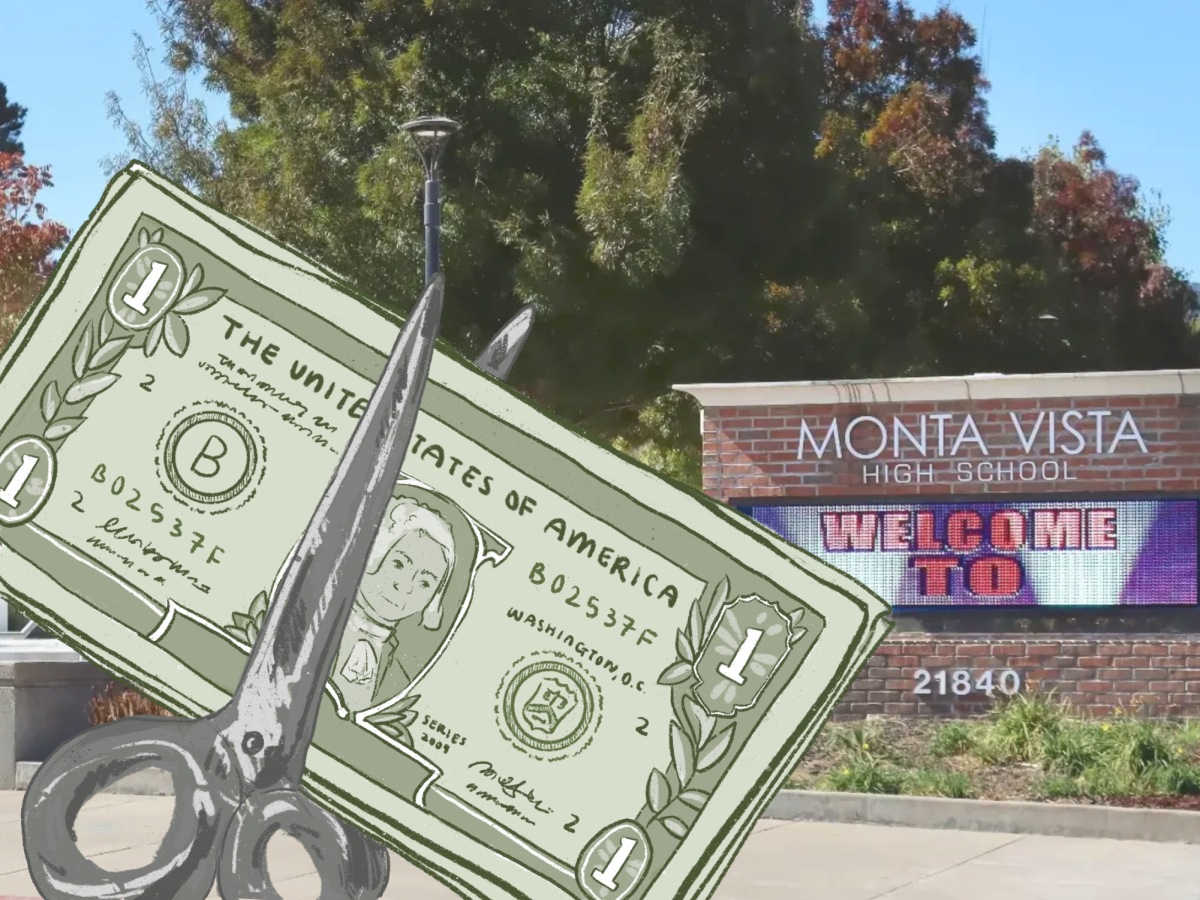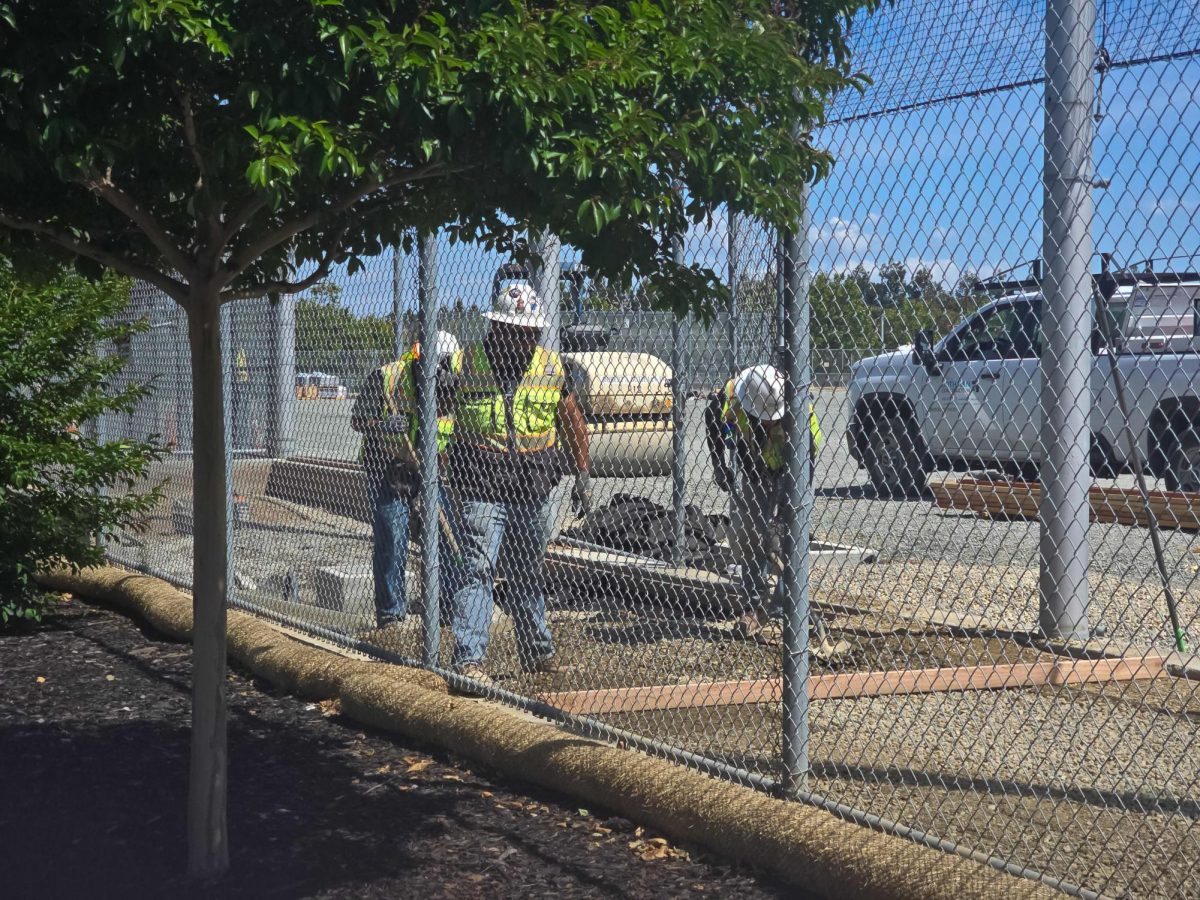
One bad day would spell the end of the road. Trying out for the national water polo team is unlike local water polo in many ways. The national water polo team consists the best of the nation. It involves the perfect mix of training, talent and luck to make it past the first cut. And senior Brendan Duffy decided to undergo this rigorous process in his pursuit for a spot to represent the US on the National Junior Water Polo Team.
Duffy was restless, sitting in the stands waiting for his name to be announced for the National Water Polo Team. He had already survived three cuts to make it onto the Pacific Zone team, but there was still one cut left ó and all his years of practice amounted to the 2011 National Tryouts.
Switching sports
After being a competitive swimmer for De Anza Cupertino Aquatics since the fifth grade, Duffy decided to make the switch when he was 12.
“He was swimming and he says, ‘Swimming is boring. What are they doing in the pool over there?'” Duffy’s father Tom Guntly said. ‘It was as simple as, “Let’s try out.'”
Duffy’s eventual passion for the game would come from his first coach and his own dedication to water polo. Though he started water polo at an older age than many others, he was determined to make up for lost time.
“He went to [his first coach], and [the coach] took the time to teach him all the skills,” his mother Angeles Duffy said.
Duffy, however, felt that DACA, where he began water polo, was more oriented toward swimmers. As he enjoyed water polo more, he decided to switch clubs. He thrived at his next water polo club teams and eventually landed a roster spot on the Stanford Water Polo Club, where he to practiced in an environment dedicated to water polo.
“He was advancing and he really enjoyed the play,” Angeles Duffy said. “We started looking into different clubs. In our area, they practice twice a week. Stanford practices four to five times a week.”
Because he plays water polo all year round, the sport epitomizes Duffy’s life. When not playing for MVHS, he plays for his club team. Last year, however, he added national tryouts on top of club and school water polo.
Duffy’s accomplishments would have been much more difficult to achieve without the help of his parents, both emotionally and physically. Once they realized Duffy’s passion towards the sport, they strived to help him in any way by driving and supporting him. Fortunately, most of his water polo tournaments were located in California, giving Duffy the opportunity to competitively excel in the sport he loves.
Duffy’s parents constantly found it difficult to make sure their son understood that academics always came first.
“We have a contract,” Guntly said.”[It’s] kind of an unspoken contract that he commits to his academics and also to future water polo.” Guntly wants Duffy to divide and conquer his academics with water polo. This is a lesson Duffy has taken to heart, knowing the consequences if he cannot balance athletics with academics.
Avoiding injury
Injuries are detrimental in all sports. But in water polo, even the most minor ones like a paper cut can be bothersome when immersed in the pool. Every part of the body plays some integral role in water polo, so when Duffy seriously injured his rotator cuff in the spring of his freshmen year, it took him the whole summer to recover.
“He lost a season. He missed the Junior Olympics,” Angeles Duffy said. “As a parent, I feel for him. They train so hard, I want them to compete, I want them to win. Seeing the team [go] and he could not compete was difficult.”
Duffy had to go through rehabilitation after his injury to get reaccustomed to the team. After one entire summer out of the pool, he had to stay dedicated to make up for lost ground and eventually play water polo again. That same dedication for the game eventually brought him to the national team tryouts.
First tryout
According to Brendan Duffy, national tryouts were nothing like the club or school tryouts he had previously experienced. Instead, it was a gathering of players just like Duffy, players who had dedicated major portions of their life to the sport.
“When you get into the pool [with other competitors], it’s like full competition the moment you are touching the water,” Angeles Duffy said. ìAll the competitors are all good.”
Ten days after CCS ended for the Matadors, Duffy had to return to the pool to start his tryouts for the national team. However, in that ten-day span before tryouts, Duffy rarely touched the water because he never found the time.
“We get in the water and I just remember feeling, ‘Oh my goodness, I feel so out of shape, oh my goodness, this is horrible,'” Duffy said. ìI remember feeling like I weighed a thousand pounds in the water.”
The first tryout was at Valley Christian High School in San Jose, but places varied and were sometimes more than three hours away. Water polo coaches run a series of drills for six straight hours; an off day often leads to getting cut right on the spot. Coaches only had that one Saturday tryout to decide who they thought was best for the
team. From the moment Duffy got in the pool, he had to play his best for six straight hours.
“I just remember trying to make every little movement, like every little twitch of my hand and every little flutter kick, as perfect as possible,” Duffy said.
The journey, however, didnít stop there for Duffy. He made it past the first cut.
The long haul
By no means was getting to national water polo practices easy. Since it was the Pacific Zone team, practices had to be held all around Northern California to accommodate the needs of all players trying out. Whole Saturdays were devoted to training with the Pacific Zone team in preparation for the last cut. Duffy considers this routine to be the most ìgruelingî experience in his water polo career. But no matter where the practices were held, the Duffy family always went to support him.
“Training itself was very different from club or from high school [water polo],” Angeles Duffy said. “They focus on certain things that everybody needed to do and everybody had to perform it that way.”
After the first cut, Duffy would later go on to other tryouts to keep moving up the ranks. After his many tryouts, he made it into the Pacific Zone Water Polo Team, which is a team comprised of the best players in the Northwest region of the United States. The remaining players underwent a series of practices, leading up to one final tournament in which the last cuts would be made. It was here that scouts and judges from the National Water Polo Team would determine who in the entire nation would be best for the team.
“There is literally a judging stand,” Duffy said. “There are two benches and the referee clock area and there is a judging stand on the other side. It is like Iím on American Idol or something. There are just three judges sitting in a booth with a clipboard and they are just writing stuff down.”
After months of practice and countless hours in the pool, all the work Duffy had gone through amounted to this moment. His play during that tournament would decide whether he was on the national team or not. This time, however, Duffy couldnít make it through the cut. His journey towards the national team was over.
“Youíve got to fit this mold,” Duffy said. “They have this image of a perfect player and you have to fit that. If you fit that, they will take you. It is not necessarily about talent or about how good you are. It is just about, Can you play how we want you to play?”
His parents, though, see that their son going so far in his first year of such competitive water polo as an achievement already. Duffy has already made a mark as a strong player on the Stanford Water Polo Club team and the Pacific Zone team as well. The only team left on his radar is to make the national team, a pursuit that will begin again in next yearís tryouts.






